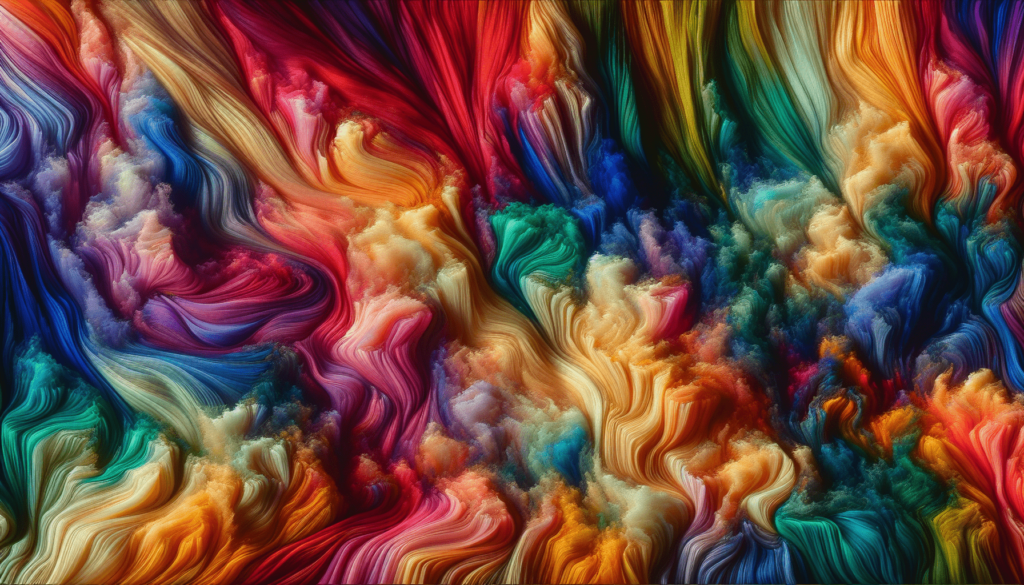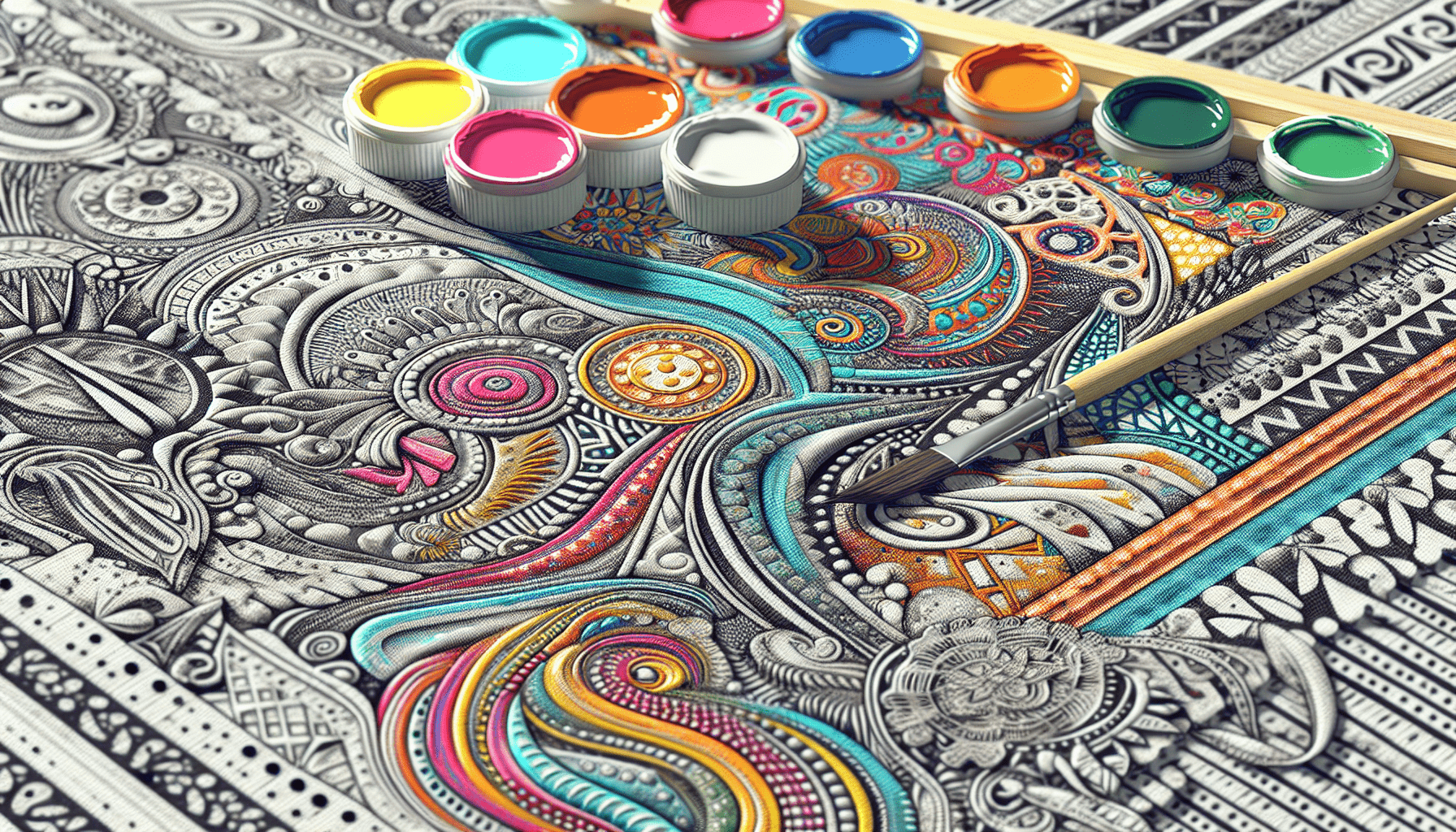In this article, you will explore the fascinating world of painting velvet fabric. Velvet, known for its luxurious texture and rich appearance, has long been favored in the realms of fashion and interior design. However, the question remains: Can you paint velvet fabric? Delve into the considerations, techniques, and potential outcomes of painting velvet fabric, and uncover the possibilities that lie within this creative endeavor.
Types of Velvet Fabric
Crushed Velvet
Crushed velvet is a type of velvet fabric that has been intentionally crushed and twisted during the manufacturing process to create a unique textured appearance. This fabric is known for its luxurious look and soft feel. It is often used for upholstery, drapery, and clothing items.
Satin Velvet
Satin velvet is a variation of velvet fabric that has a smooth and lustrous surface. It combines the softness of velvet with the subtle sheen of satin, creating a fabric that exudes elegance and sophistication. Satin velvet is commonly used for evening wear, formal attire, and home decor applications.
Silk Velvet
Silk velvet is considered the epitome of luxury when it comes to velvet fabrics. It is made from a blend of silk and velvet fibers, resulting in a fabric that is incredibly soft, smooth, and lightweight. Silk velvet is often used for high-end fashion garments, couture designs, and upscale home decor.
Cotton Velvet
Cotton velvet is a more affordable option compared to other types of velvet fabric. It is made from pure cotton fibers, giving it a soft and plush texture. While not as luxurious as silk velvet, cotton velvet is still a popular choice for upholstery, drapery, and casual clothing items due to its durability and affordability.
Factors to Consider Before Painting Velvet Fabric
Fabric Composition
Before painting velvet fabric, it is important to consider the fabric’s composition. Different fabric compositions may respond differently to paint, affecting color absorption and overall appearance. It is recommended to choose a fabric that has a high percentage of natural fibers, such as silk or cotton velvet, as they tend to hold paint better than synthetic fabrics.
Fabric Care Instructions
Another factor to consider is the fabric care instructions. Some velvet fabrics may require special care, such as dry cleaning only or delicate hand washing. It is essential to ensure that the fabric can withstand the painting process without getting damaged or losing its original texture.
Desired Outcome
Understanding the desired outcome of the painting project is crucial in determining the suitable painting techniques and materials to use. Whether you want a solid color application, blending and gradient effects, or intricate patterns, the desired outcome will guide your choices throughout the painting process.

Preparing Velvet Fabric for Painting
Washing and Drying
Before starting the painting process, it is recommended to wash and dry the velvet fabric to remove any dirt, dust, or stains. Follow the fabric care instructions and use a gentle detergent. Avoid using fabric softeners as they may leave a residue that interferes with paint adhesion.
Ironing the Fabric
Once the fabric is clean and dry, it is important to iron it to remove any wrinkles or creases. Set the iron to the appropriate heat setting based on the fabric’s care instructions. Use a pressing cloth or iron the fabric from the back to prevent any direct heat contact with the velvet fibers.
Removing Stains and Imperfections
Inspect the velvet fabric for any stains or imperfections that may affect the painting process or final result. Treat any stains or spots with a suitable stain remover, following the instructions provided. Ensure that the fabric is completely dry and stain-free before proceeding with the painting process.
Choosing the Right Paint for Velvet Fabric
Fabric Paint
Fabric paint is specifically formulated for painting on fabrics and offers excellent adhesion and durability. It is available in a wide range of colors and finishes, making it a popular choice for painting velvet fabric. Fabric paint is generally heat set to ensure proper adhesion and longevity.
Acrylic Paint
Acrylic paint is a versatile option that can be used on various surfaces, including velvet fabric. It offers a wide color selection, good coverage, and the ability to create different textures and effects. However, it is important to mix acrylic paint with a fabric medium to enhance its flexibility and adhesion on velvet fabric.
Watercolor Paint
Watercolor paint can be used on velvet fabric to create a soft and delicate appearance. It is ideal for creating watercolor-like effects or subtle washes of color. However, it is important to note that watercolor paint may not provide the same level of durability as fabric paint or acrylic paint. It is recommended to use a fixative or fabric medium to protect the painted surface.

Testing the Paint on a Small Area
Applying Paint on a Scrap Fabric
Before painting the entire velvet fabric, it is advisable to test the paint on a small inconspicuous area or a scrap piece of the same fabric. This will allow you to assess the paint’s compatibility with the fabric and evaluate the desired color, texture, and appearance.
Checking for Color Transfer or Bleeding
During the testing phase, it is important to check for color transfer or bleeding. Apply the paint to the test area and allow it to dry completely. Then, gently rub the painted area with a clean white cloth. If the color transfers onto the cloth or if the colors bleed together, it may be necessary to adjust the painting technique or explore alternative paint options.
Assessing the Fabric’s Texture and Appearance
After the paint has dried on the test area, evaluate the fabric’s texture and appearance. Consider whether the desired outcome has been achieved and whether the paint adheres well to the fabric. Assess the level of color saturation, any changes in the fabric’s texture, or any undesired stiffening or cracking of the painted surface.
Applying Paint to Velvet Fabric
Using a Brush
When applying paint to velvet fabric, using a brush can provide more control and precision. Choose a brush suitable for the size of the design and the desired painting technique, such as flat brushes for larger areas or round brushes for intricate details. Ensure that the brush is clean and free from any residual paint or debris before starting.
Spray Painting
Spray painting can be an effective technique for achieving an even and smooth application on velvet fabric. It is important to choose a spray paint specifically formulated for fabric to ensure proper adhesion and flexibility. Protect the surrounding area with masking tape or newspaper to avoid overspray.
Dabbing or Stippling
Dabbing or stippling is a technique that involves using a sponge or a stippling brush to apply paint in a stippled or dabbing motion. This technique can create a textured and dimensional effect on velvet fabric. Experiment with different pressures and layering to achieve the desired depth and texture.
Painting Techniques for Velvet Fabric
Solid Color Application
For a solid color application on velvet fabric, ensure that the paint is evenly and thoroughly applied. Start with lighter layers and gradually build up the color intensity as needed. Allow each layer to dry completely before applying the next to prevent smudging or blending of colors.
Blending and Gradient Effects
To create blending or gradient effects on velvet fabric, consider using a wet-on-wet technique. Apply a base color and while it is still wet, blend in a secondary color using a brush or sponge. Work quickly to achieve a seamless transition between colors. Experiment with different color combinations and blending techniques to achieve the desired effect.
Texture and Pattern Creation
Velvet fabric provides a great canvas for creating texture and patterns with paint. Explore different techniques such as dry brushing, stippling, splattering, or using stencils to add dimension and interest to the fabric. Keep in mind the desired outcome and experiment with different tools and painting methods to achieve the desired texture or pattern.
Drying and Curing Painted Velvet Fabric
Air Drying
After applying paint to velvet fabric, allow it to air dry completely before proceeding with any additional steps. This ensures that the paint fully adheres to the fabric and reduces the risk of smudging or damage during the drying process. Place the painted fabric on a clean and flat surface, away from direct sunlight or heat sources.
Heat Setting with an Iron
Heat setting is a crucial step in the painting process to improve the paint’s adhesion and longevity on the velvet fabric. Once the paint has dried, carefully place a thin, clean cloth over the painted area and set the iron to the appropriate heat setting based on the fabric care instructions. Gently press the iron onto the cloth-covered area for a designated amount of time, according to the paint manufacturer’s instructions.
Curing Paint in a Dryer
Some fabric paints may require curing in a dryer to ensure the paint’s longevity and flexibility. Follow the paint manufacturer’s instructions for this process. Place the painted fabric in a dryer with no other items, set it to the recommended temperature and time, and allow the paint to cure thoroughly. Avoid using excessive heat or over-drying, as it may damage the fabric or affect the paint’s appearance.
Finishing and Protecting Painted Velvet Fabric
Fabric Medium or Fixative
To enhance the durability and flexibility of the painted velvet fabric, consider applying a fabric medium or fixative as a finishing touch. Fabric mediums help paint to adhere better to the fabric and retain its softness and flexibility. Follow the product instructions for proper application and drying time.
Topcoat Sealant
For added protection and longevity, applying a topcoat sealant can help seal the paint and protect it from wear, fading, or damage. Choose a sealant specifically designed for fabric painting and follow the manufacturer’s instructions for application. Remember to test the sealant on a small, inconspicuous area before applying it to the entire painted fabric.
Caring for Painted Velvet Fabric
Spot Cleaning
When it comes to caring for painted velvet fabric, spot cleaning is generally the safest method. Use a clean cloth or sponge, and mild soap or detergent diluted with water to gently dab and blot the stained area. Avoid rubbing or scrubbing harshly, as it may affect the paint or the fabric’s texture. Allow the fabric to air dry completely before using or storing.
Gentle Hand Washing
If the entire painted velvet fabric needs cleaning, hand washing is recommended. Fill a basin or sink with lukewarm water and a mild detergent suitable for delicate fabrics. Gently agitate the fabric in the soapy water, carefully avoiding any excessive rubbing or twisting. Rinse the fabric thoroughly with cool water and gently squeeze out the excess water. Air dry the fabric away from direct sunlight or heat sources.
Avoiding Harsh Chemicals
When caring for painted velvet fabric, it is important to avoid using harsh chemicals, bleach, or abrasive cleaners. These substances can damage the paint, affect the fabric’s texture, or cause the colors to fade or bleed. Stick to gentle cleaning methods and handle the fabric with care to preserve the painted design.



